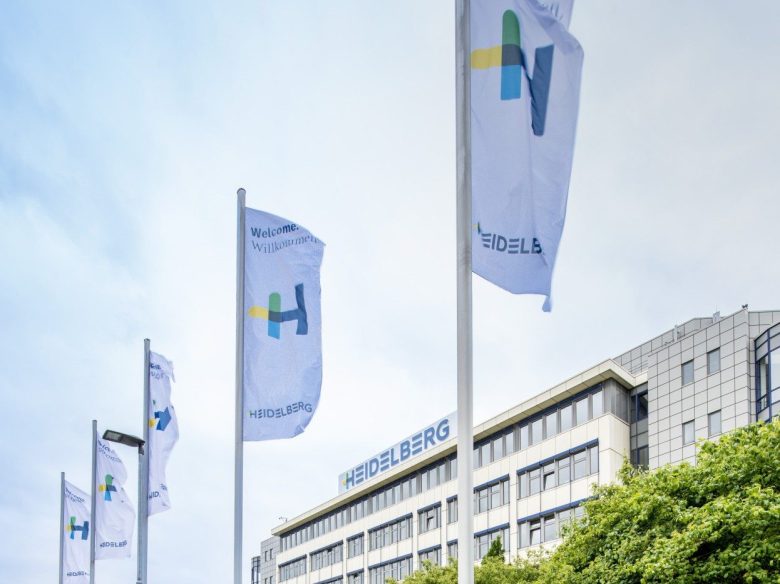
Heidelberg has released its financial results for the first nine months of financial year 2024/2025 (for the period between 1 April and 31 December 2024) and the third quarter (for the period between 1 October and 31 December 2024), reporting an adjusted EBITDA of €86 million for the nine-month period.
Adjusted EBITDA for the third quarter of the current financial year increased to €55 million from €34 million the same time last year. The adjusted EBITDA margin improved from 5.7 per cent to 9.2 per cent.
In the third quarter, net provisions amounting to €29 million were established for the planned measures to reduce labour costs and were adjusted. Including this item, EBITDA in Q3 totalled €26 million (€34 million the same time last year).
Establishing these provisions, Heidelberg reported a loss in net result after taxes of €7 million in the third quarter (from a profit of €1 million last year) and a loss of €42 million for the nine-month period (from a profit of €34 million last year).
The company said the free cash flow after nine months was, as anticipated, a decrease of €97 million, down from the €54 million loss last year. In the third quarter, it “improved significantly compared with the previous year”, creeping into positive figures at €4 million, from a loss of €26 million the previous year.
Heidelberg said the main reasons for this were the low sales volume in the first quarter and its associated high losses.
Heidelberg’s adjusted EBITDA margin for the third quarter was 9.2 per cent (equivalent quarter of previous year: 5.7 per cent), saying its with high-capacity utilisation and intensified cost-cutting measures had a particularly positive impact.
Sales to date during financial year 2024/2025 increased from quarter to quarter – it brought in €594 million for the third quarter and incoming orders were up by 8.3 per cent at € 550 million (equivalent quarter of previous year: € 508 million).
The biggest contributions to the business were made by the EMEA region (+16 per cent) and the Packaging Solutions segment (+15 per cent).
According to the company, incoming orders in the packaging segment increased significantly – by around 11 per cent to € 959 million for the first three quarters and by about 15 per cent in the third quarter.
“Packaging printing is the current growth sector for the printing industry, including Heidelberg. In particular, the product innovation around the Boardmaster for high-volume packaging printing meets customer needs,” the company’s chief technology and sales officer David Schmedding said.
“We are looking to successively expand our business and our portfolio in this market by using automation, robotics, and software to offer our customers integrated end-to-end solutions for the entire manufacturing process.”
In the print segment, incoming orders for the nine-month period increased by 4.4 per cent to €858 million.
Heidelberg added the high order backlog of €903 million “paves the way for a very strong final quarter”.
“We have succeeded in continuously improving our sales and operating result quarter by quarter in a difficult economic environment. Thanks to our high order backlog, we can confirm that we will achieve our targets for the year,” Heidelberg CEO Jürgen Otto said.
“And we will drive down costs further still in the coming year by implementing our plan for the future and boosting efficiency. This cost discipline will have a positive effect on our profitability, which should improve further in the next financial year.”
To expand its market position, Heidelberg said it is increasingly tapping into growth potential in its core market – from packaging and digital printing to software and lifecycle business. The first digital presses from the cooperation with Canon are expected to go to customers in Switzerland and Germany.
Heidelberg said this cooperation will significantly boost future sales generated by digital print solutions, including consumables, software, and service. The company is also keen to further expand its portfolio in the growing market for green technologies.
This includes key areas such as high-precision plant engineering, the automotive industry, charging infrastructure and software, and new hydrogen technologies.
“Our successful management of net working capital played a key role in achieving a positive free cash flow despite high inventories due to the order situation,” Heidelberg CFO Tania von der Goltz said.
“The big improvements we are expecting in the results for the final quarter and the reduction of inventories by the end of the financial year will have a positive impact on the free cash flow.”
Comment below to have your say on this story.
If you have a news story or tip-off, get in touch at editorial@sprinter.com.au.
Sign up to the Sprinter newsletter

